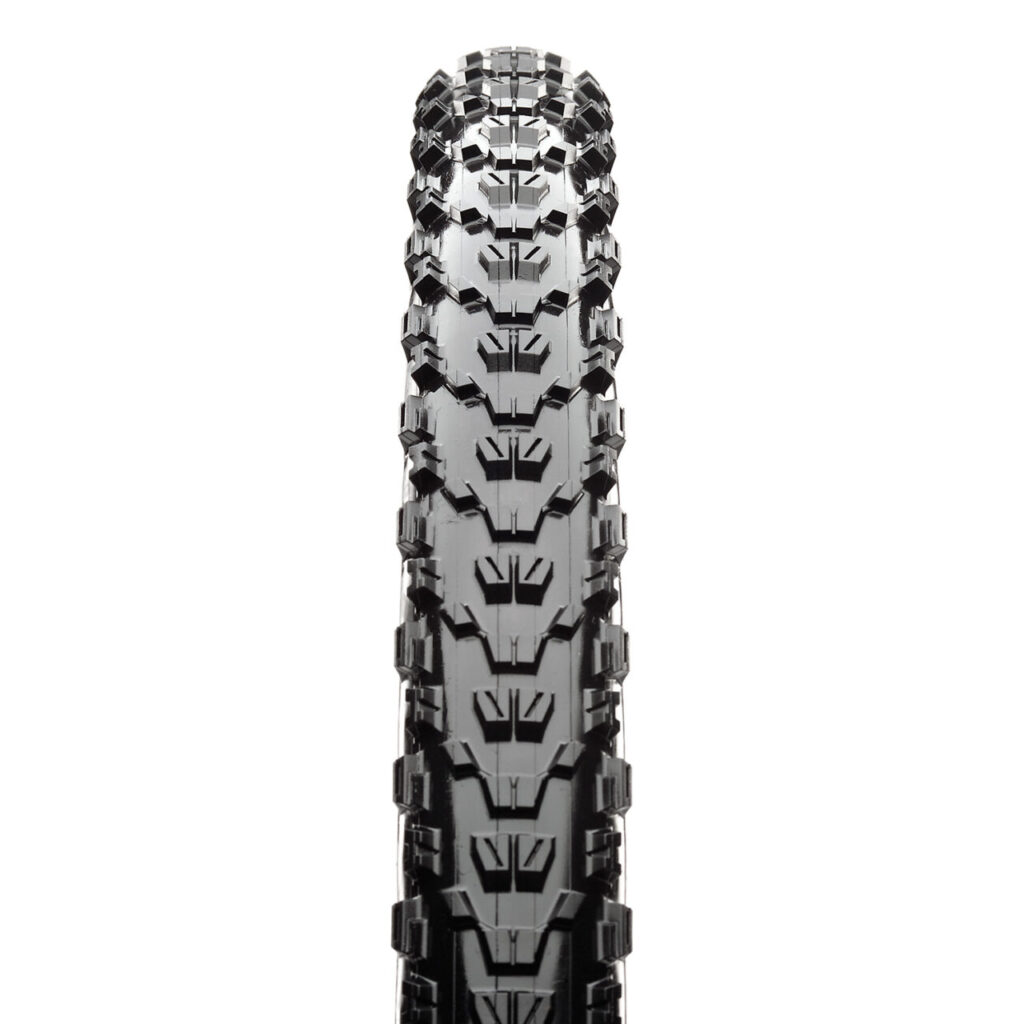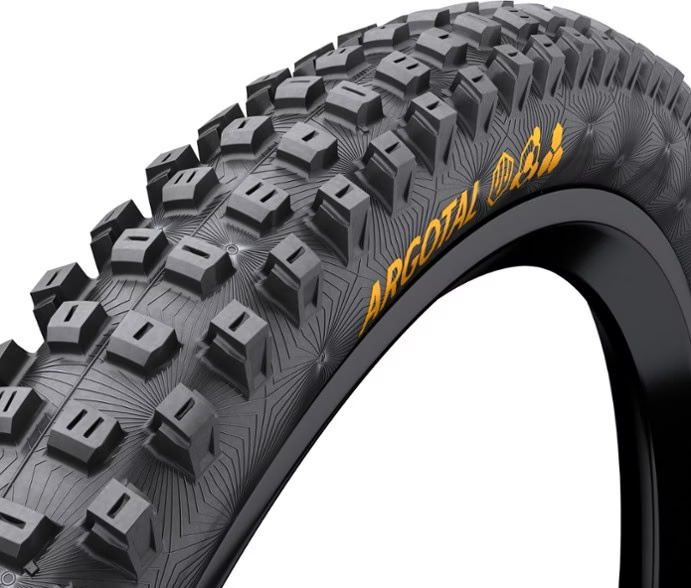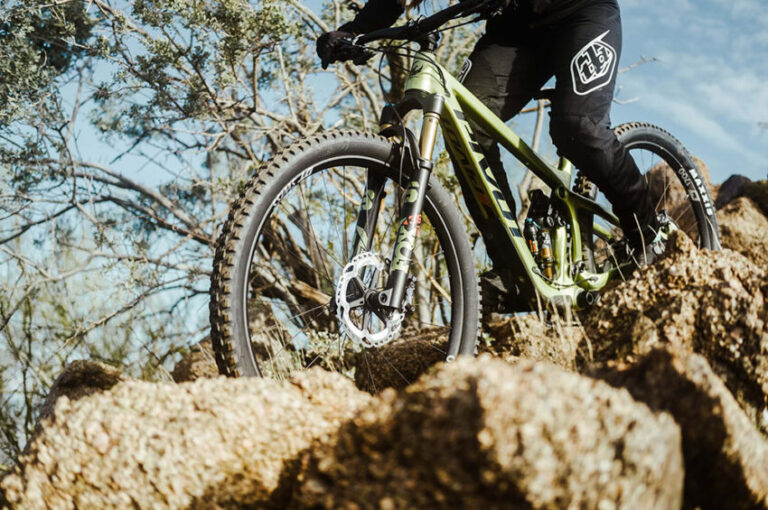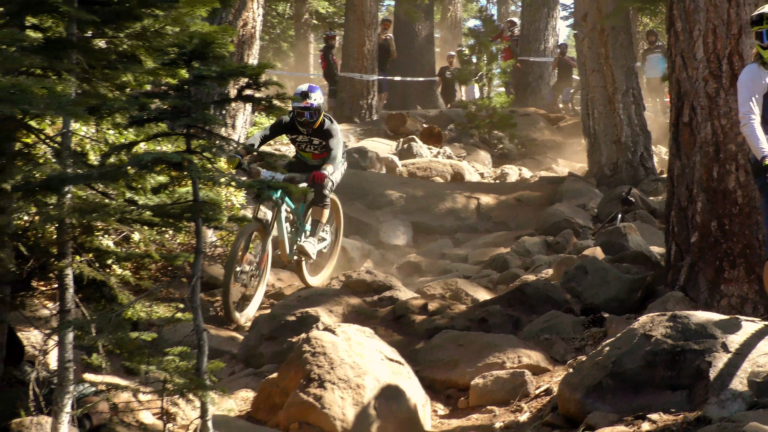Downhill Bike Tire Buyers Guide: A Masters Cyclist 101

When it comes to conquering the steep descents and challenging terrains that downhill mountain biking offers, having the right tires is essential. Downhill bike tires are critical in providing traction, control, and stability as you navigate rough trails and technical sections. This comprehensive Downhill Bike Tire Buyers Guide aims to provide you with the knowledge needed to make informed decisions when choosing the perfect tires for your downhill adventures.
Tire Size and Compatibility
The first step in selecting downhill bike tires is understanding the sizing system. Downhill bike tires typically use a measurement that represents the tire’s width followed by its diameter, often expressed as “width x diameter,” such as 2.5″ x 27.5″. Tire diameter options for downhill bikes include 26-inch, 27.5-inch, and 29-inch, with widths ranging from 2.3 inches to 2.8 inches or more. Check your bike’s frame clearance and fork compatibility to ensure the chosen tire size fits without issues.
Tire Types
Downhill bike tires are designed to withstand the extreme demands of aggressive riding on rugged terrains. Several types are suitable for downhill riding:
- Wire Bead Tires: These tires have a steel wire bead that holds them in place on the rim. They’re durable and reliable, making them a popular choice for downhill biking.
- Tubeless Tires: Tubeless setups are gaining popularity in downhill biking due to their ability to run at lower pressures for enhanced traction and control. They also reduce the risk of pinch flats.
- Dual-Ply Tires: Downhill-specific tires often feature dual-ply construction for added durability and protection against impacts and punctures. The casing is reinforced to handle the rigors of aggressive riding.
Tread Patterns and Compound

Tread patterns vary widely to accommodate different trail conditions. Look for deep and aggressive treads with well-spaced knobs for excellent grip on loose and technical terrain. Opt for softer rubber compounds that provide maximum traction but might wear out faster. Harder compounds are more durable but can sacrifice some grip.
Width and Volume
Wider tires offer better stability, traction, and control in downhill riding. While 2.5″ to 2.6″ tires are common, some downhill riders prefer even wider options (2.8″ or more) for maximum grip and cushioning over rough trails. Consider your personal preferences, the specific trails you ride, and your bike’s clearance when choosing tire width.
Casing and Durability
Downhill riding subjects tires to intense forces, impacts, and sharp obstacles. Look for tires with reinforced casings, thicker sidewalls, and dual-ply constructions. These features enhance the tire’s durability and ability to handle aggressive terrain without puncturing or sidewall cuts.
Tubeless Setup and Sealant Compatibility
Tubeless tires are popular in downhill biking due to their puncture resistance and ability to run lower pressures for better traction. Ensure the tires you choose are compatible with a tubeless setup and that you have the appropriate sealant to prevent punctures and leaks.
Air Pressure and Suspension Tuning
Experiment with tire pressure to find the right balance between grip and rolling resistance. Lower pressures provide better traction and absorption but might risk pinch flats or burping in tubeless setups. Adjust your suspension settings accordingly to complement your tire pressure for a smoother ride.
Riding Conditions
Consider the types of trails you’ll be tackling. If you ride technical and rocky downhill courses, prioritize tires with exceptional grip and robust construction. If you frequent bike parks or trails with mixed surfaces, look for versatile tires that handle a range of conditions.
Brands and Models

Reputable brands in the downhill tire market include Maxxis, Schwalbe, Continental, Michelin, and WTB. Research specific models designed for downhill biking to find options that match your riding style and terrain preferences.
Budget Considerations
Investing in high-quality downhill tires is essential for both performance and safety. While premium tires might come at a higher cost, their durability and ability to handle aggressive riding are worth the investment.
Regular Inspection and Maintenance
Inspect your tires regularly for signs of wear, cuts, or damage. Keep them clean and properly inflated to ensure optimal performance and longevity.
In conclusion, selecting downhill bike tires involves considering factors such as size, type, tread pattern, compound, width, casing, and riding conditions. Downhill riding demands robust and capable tires that provide grip, stability, and durability on challenging trails. By researching, understanding your riding needs, and investing in high-quality tires, you can enhance your downhill biking experience and confidently conquer even the most demanding terrains.
Click here to see our the best rated downhill bike tires.
John
Frequently Asked Questions
Downhill (DH) mountain biking demands tires that can handle aggressive terrain, high speeds, and rough conditions. The right tire width can play a crucial role in how the bike performs in these situations. Here’s a general guide on tire widths for downhill mountain biking:
Tire Widths for Downhill Mountain Biking:
- 2.3 to 2.5 inches: These are considered standard widths for many downhill tires. They offer a good balance between grip, rolling resistance, and weight. Many DH riders find these widths to be versatile, especially on tracks that are not overly rocky or muddy.
- 2.6 to 2.8 inches: These widths are gaining popularity for DH riding. They provide more surface area for grip, which can be beneficial in loose, rocky, or muddy conditions. The added width can provide better shock absorption on rough tracks, but they can be a bit heavier.
- 3.0 inches and above: These are considered plus-sized tires and are less common in pure downhill scenarios. They provide maximum grip and cushioning but come at the cost of increased weight and rolling resistance. Some riders might use them in very specific conditions or on certain tracks, but they’re not the norm for traditional DH racing.
Downhill Bike Tire Buyers Guide: Other Factors to Consider:
- Tire Tread: The pattern and depth of the tire tread also play a significant role in grip and performance. For muddy conditions, you’ll want a tire with tall, spaced-out knobs to shed mud. For hardpack or rocky conditions, a tire with a denser pattern might be more suitable.
- Tire Compound: Soft compounds provide better grip but wear out faster, while harder compounds last longer but might not grip as well, especially in wet conditions.
- Rim Width: The internal width of your rims can influence how the tire sits and performs. A wider rim can make a tire profile flatter, which can increase the contact patch and grip. Ensure that your rim width is compatible with your tire choice.
- Tire Pressure: The right tire pressure is crucial. Too low, and you risk pinch flats or the tire rolling off the rim in corners. Too high, and you lose grip and shock absorption. The optimal pressure can vary based on rider weight, riding style, trail conditions, and tire/rim combination. Many downhill riders run pressures in the range of 20-30 psi, but this can vary.
When choosing a tire width for downhill mountain biking, consider the specific conditions you’ll be riding in, your personal preferences, and any equipment constraints. It’s always a good idea to test out different setups to see what feels best for you.
How do I know what bike tire to buy?
Choosing the right bike tire involves considering multiple factors based on your type of bike, the terrain you’re riding on, and your personal preferences. Here’s a guide to help you make an informed decision:
- Know Your Size:
- Look at the sidewall of your current tire. You’ll typically find a size printed there, like “700x25c” or “26×2.1”.
- The first number is the diameter of the tire, which needs to match your wheel’s diameter. Common sizes include 700c (for most road bikes), 26″, 27.5″, and 29″ (for mountain bikes).
- The second number is the width. You have a little leeway here depending on your rim width and frame clearance.
- Determine the Intended Use:
- Road Biking: Typically uses narrow tires (23mm to 32mm). Look for tires with smooth treads for faster rolling on tarmac.
- Mountain Biking: Requires wider tires (1.9″ to 2.5″ or wider). The specific tread pattern depends on the terrain:
- Knobbier patterns for loose, muddy terrains.
- More streamlined patterns for hard-packed trails.
- Touring/Commuting: These bikes often use medium-width tires (28mm to 42mm) with a balance between smooth and knobby tread for comfort and traction.
- Cyclocross: Uses tires around 33mm wide with a tread pattern suitable for grass, trails, and mud.
- Hybrid/Urban: Tires range from 28mm to 42mm and have a tread pattern suitable for a mix of terrains, from roads to gravel paths.
- Tire Compound and Tread Pattern:
- Soft Compounds: Offer better grip but might wear out faster.
- Hard Compounds: Last longer but might not provide as much traction.
- Tread Pattern: Choose according to the terrain. For example, a slick tire is great for the road, while a knobby tire is good for mountain biking.
- Tubeless or Tubed:
- Tubed Tires: These are the traditional tires that require inner tubes.
- Tubeless Tires: These can be run without tubes, reducing the chances of pinch flats. They require specific rims and often sealant to function properly.
- Protection and Durability:
- Look for features like puncture protection or reinforced sidewalls if you often ride in areas with sharp debris or rough roads.
- Heavier, more robust tires are suitable for touring or urban riding where durability is a priority.
- Weather Conditions:
- If you often ride in wet conditions, choose a tire with a tread pattern that sheds water well and is made from a compound that remains grippy when wet.
- Budget and Brand Preference:
- There are many reputable tire manufacturers. Research reviews and recommendations for specific brands and models that fit your needs and budget.
- Personal Preferences:
- Some riders prioritize speed, while others might prioritize comfort, grip, or durability. Understand what’s most important to you.
- Consult Your Local Bike Shop:
- It’s always a good idea to talk to experts, especially if you’re unsure. They can provide recommendations based on your specific bike and needs.
Remember, tires have a significant impact on your riding experience. A good set of tires can improve comfort, speed, and safety. It’s worth investing in quality tires that suit your riding style and conditions.
What is the difference between 2.25 and 2.35 mountain bike tires?
The numbers “2.25” and “2.35” refer to the width of mountain bike tires in inches. Specifically, a 2.25-inch tire is 0.10 inches (or 2.54 mm) narrower than a 2.35-inch tire. While this difference might seem small, it can have a noticeable impact on your ride. Here are the key differences and potential implications of choosing between these two tire widths:
- Traction and Grip: A wider tire, like the 2.35, has a larger contact patch with the ground, which can increase traction. This can be particularly beneficial in loose or wet conditions.
- Rolling Resistance: Wider tires can have slightly more rolling resistance on hard surfaces due to the increased contact patch. However, on softer terrains, like loose dirt or mud, a wider tire might “float” on top rather than sinking in, which could reduce rolling resistance in those conditions.
- Cushion and Comfort: A wider tire can provide better cushioning against bumps and small obstacles, as it can deform more before transmitting the shock to the rider. This makes for a plusher, more comfortable ride.
- Weight: Wider tires are generally heavier due to the extra material used. The difference in weight between a 2.25 and a 2.35 tire of the same model and construction might not be huge, but for riders conscious about weight, it’s something to consider.
- Tire Pressure: Wider tires can often be run at slightly lower pressures without risking pinch flats, which can further enhance grip and comfort. However, the optimal tire pressure always depends on several factors, including rider weight, terrain, and riding style.
- Frame and Fork Clearance: Before upgrading to a wider tire, it’s essential to ensure that your bike’s frame and fork can accommodate the added width without any rubbing. Some older or more narrowly designed bikes might not have sufficient clearance for wider tires.
- Mud Shedding: In muddy conditions, a slightly narrower tire like the 2.25 might cut through the mud more effectively than a wider one, reaching the harder ground underneath for better traction. Conversely, a wider tire might float on top of the mud, which could be beneficial in some scenarios.
In summary, while 2.25 and 2.35 tires are quite close in width, the choice between them can affect the feel and performance of your ride. The best tire width for you will depend on your preferences, riding style, the typical terrains you tackle, and the specific design and capabilities of your mountain bike. If possible, test riding different tire widths can help you determine which suits you best.
What does 700x25c mean?
The notation “700x25c” is a common way to represent tire size, especially for road bike tires. Let’s break down what each part of this designation means:
- 700: This number traditionally refers to the approximate outer diameter (in millimeters) of the tire when it’s inflated. In modern terms, it’s used as a category label rather than a precise measurement. Tires labeled “700” are intended for 622mm diameter rims, which are standard for most road bikes. This standard is often referred to as “700c.”
- 25c: The “25” is the width of the tire in millimeters. So, a 700x25c tire is 25mm wide. The “c” is a historical designation from a French tire sizing system. In this context, “c” doesn’t carry a specific meaning today but is often used to denote this size category of tire.
However, there’s a mix-up in the context you provided. “700x25c” is not a size used for downhill mountain bike tires. Instead, this is a size commonly found on road bikes. Downhill mountain bike tires typically come in diameters like 26″, 27.5″, or 29″, and their widths are usually much greater, often ranging from 2.3″ to 2.8″ or even wider.
Always ensure you’re looking at the correct tire size for your specific bike and intended use. If you’re ever in doubt, consulting your local bike shop can help clarify any confusion!





